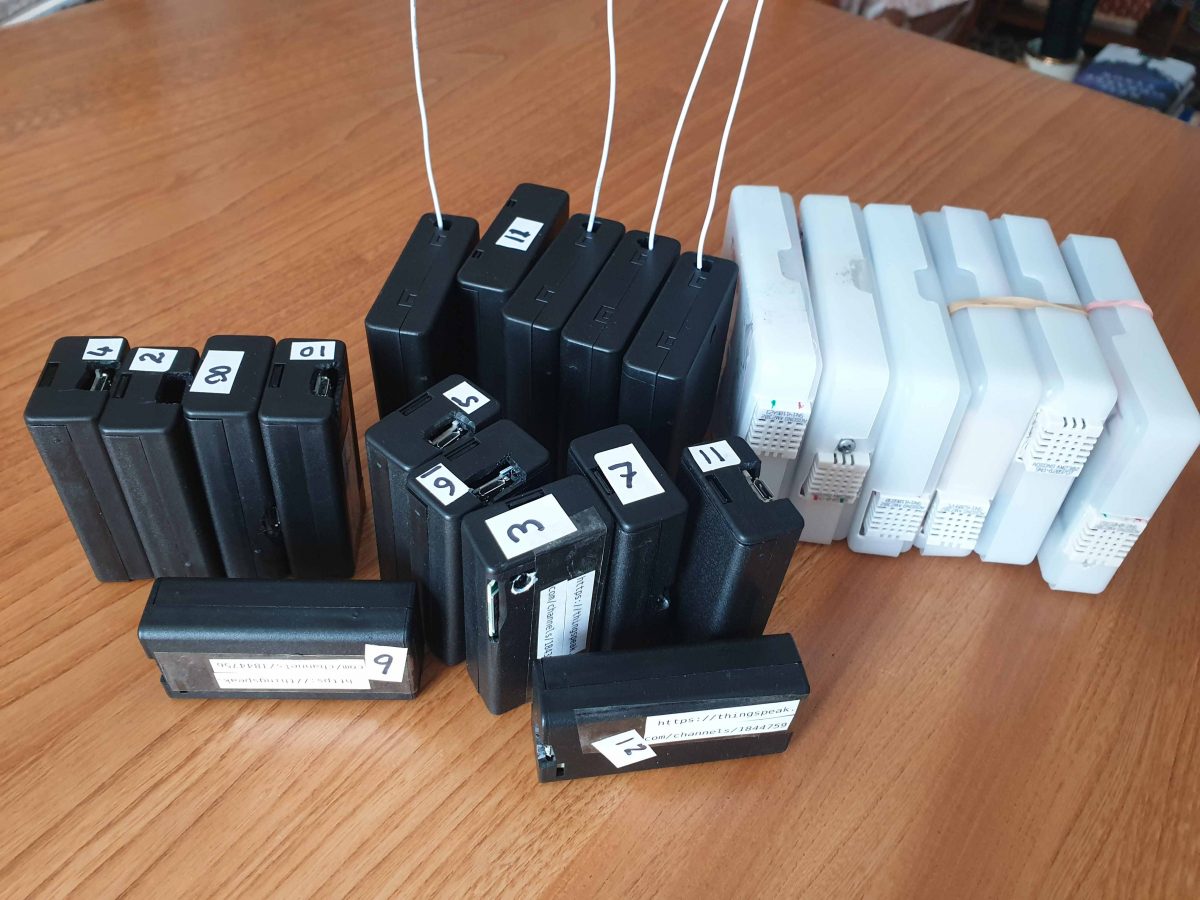The stock of thermal monitors has been growing, but now it’s time to send them out to those engineers in the first group who have a venue and group who want to improve the comfort and carbon footprint of their building.
Not all the boxes look the same. Firstly, there are sensors – with the white component sticking out of the box. They take readings, but they can’t access the internet. That uses too much power for a battery device which needs to be placed where people stand or sit. They can however send the data a short distance using a lower power signal, similar to the way Bluetooth can run off batteries. Secondly, there are internet enabled hubs which can both receive the data and also send it over the internet to our server, and those must be plugged in to a USB power supply. For venues without hubs, the sensor box can save the readings for people to pick up later.
The design has also evolved in small ways as little changes were spotted that made construction easier or the device more robust. The visible aerials are partly this and partly an experiment to see if they improve the range – tests have shown little or no difference but out in the field we might discover which is best.
We have now had some sensors running for long enough to know that a year on Lithium AA batteries is likely and even with Alkaline batteries they might last a month.
A sensor and hub in a small padded envelope weight less than 100gms and fit in a ‘large envelope’ which keeps mailing costs low. Lets hope the postal service doesn’t let us down now.
